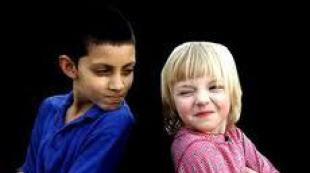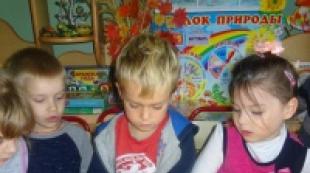Dictionary. Generalization It's better to declare it like this
Nizamov
Questionnaire "Determination of a generalized indicator of the social well-being of a family"
1. Composition families:
A) mother, father, grandmother, grandfather - 5;
B) only mother and father -4;
C) one mother, one father - 3;
D) one mother, one father - 2;
D) no parents: grandmother, grandfather, other relatives-1.
2. Child health:
A) practically healthy - 5;
B) often gets sick within the limits of normal development - 4;
C) has chronic diseases - 3;
D) mental retardation -2;
D) has congenital pathologies, neuropsychiatric diseases - 1.
3. Sanitary and housing conditions of life families:
BUT) well-maintained separate apartment - 5;
B) a separate apartment with the parents of the spouses - 4;
C) more than one room in a communal apartment with amenities - 3;
D) a room in a communal apartment with private facilities - 2;
E) a room in a hostel, in a barrack without amenities - 1
4. Level social well-being of the family:
A) an atmosphere of mutual support, goodwill - 5;
B) a healthy lifestyle without emotional coloring: without quarrels and without great affection, live "out of habit" - 4;
C) in family quarrel, scandals, one of the parents is prone to drinking - 3;
D) criminal record of parents, drunkenness, assault, severe form of mental retardation of one or both parents - 2;
D) are registered with a diagnosis of alcoholism, drug addiction, antisocial behavior - 1.
5. Income families:
A) they can practically not deny themselves anything - 5;
B) mostly enough money, but takes a loan or debt to buy durable goods - 4;
C) there is money for everyday expenses, but buying clothes causes difficulties - 3;
D) live from paycheck to paycheck - 2;
D) there is not enough money to pay - 1.
6. Behavior of the child in the nursery garden:
A) good - 5;
B) satisfactory - 4;
C) unsatisfactory -3;
7. Out-of-school communication with child:
A) on the basis of constant joint classes in circles, sections, on the basis of common positive interests - 5;
B) non-systemic leisure communication on interests, one-time meetings for joint spending of free time - 4;
C) communication based on empty pastime, lack of positive goals - 3;
8. Emotional attitude of parents with children:
A) constant support, reasonable demands on children, democratic relations, atmosphere of trust - 5;
B) blind love - 4;
C) for parents, their own life is primary, but the attitude towards children is friendly, interested - 3;
D) indifference, lack of care for children, neglect, children as an additional burden, additional problems - 2;
E) tense-conflict relations between parents and children, various forms of violence applied to children - 1.
When analyzing the characteristics of a particular child, the set points:
Below 30 - suggests that a particular child belongs to a high-risk group (the lower the score, the higher the risk);
From 31 to 40 - the social well-being of the child is determined within the average norm;
Over 40 - high level social welfare of the child(the more points, the higher the level) well-being) .
Related publications:
Questionnaire for parents "Determining the child's interest in fine arts" Questionnaire for parents "Determining the child's interest in visual activity" 1. Are you interested in what your child was doing today.
Consultation of a social educator "Seven risks of a foster family: why children are returned to orphanages" Seven risks of a foster family: why children are returned to orphanages "And then we took him back to the orphanage" - this phrase hardly evokes.
Ensuring the emotional well-being of children in the group. From work experience MBDOU "Child Development Center - Kindergarten No. 3" ENSURING THE EMOTIONAL WELL-BEING OF CHILDREN IN THE GROUP (FROM WORK EXPERIENCE) Prepared by the educator.
Ensuring the emotional well-being of the child At preschool age, emotional well-being provides a high level of well-being.
Determining the level of motivation in teaching mathematics Over the past decades, the school has experienced a new period of improvement in mathematical education. The issue is of particular relevance.
Determination of the level of speech symptoms of a child with TNR The article presents an innovative experimental design activity in a preschool institution for children with SPD, using an authorized one.
Definition of sounds and letters in a word. Training apparatus Slide 1 Definition of sounds and letters in a word. Slide 2 Guys! I took a photo, but it came out black and white. Help me color it.

Questionnaire "determination of a generalized indicator of the social well-being of a family"
1. Family composition:
A) mother, father, grandmother, grandfather - 5;
B) only mother and father -4;
C) one mother, one father - 3;
D) one mother, one father - 2;
E) No parents: grandmother, grandfather, other relatives-1.
2. School performance:
A) good - 5;
B) satisfactory -4;
C) unsatisfactory -3;
D) left school, works - 2;
D) left school, does not work - 1.
3. Child's health:
A) practically healthy - 5;
B) often gets sick within the limits of normal development - 4;
C) has chronic diseases - 3;
D) mental retardation -2;
D) has congenital pathologies, neuropsychiatric diseases - 1.
4. Sanitary and housing conditions of the family:
A) comfortable separate apartment - 5;
B) a separate apartment with the parents of the spouses - 4;
C) more than one room in a communal apartment with amenities - 3;
D) a room in a communal apartment with private facilities - 2;
E) a room in a hostel, in a barrack without amenities - 1.
5. Family income:
A) they can practically not deny themselves anything - 5;
B) mostly enough money, but takes a loan or debt to buy durable goods - 4;
C) there is money for everyday expenses, but buying clothes causes difficulties - 3;
D) live from paycheck to paycheck - 2;
D) there is not enough money to pay - 1.
6. The level of social well-being of the family:
A) an atmosphere of mutual support, goodwill - 5;
B) a healthy lifestyle without emotional coloring: without quarrels and without great attachment, they live “out of habit” - 4;
C) quarrels, scandals in the family, one of the parents is prone to drinking - 3;
D) criminal record of parents, drunkenness, assault, severe form of mental retardation of one or both parents - 2;
D) are registered with a diagnosis of alcoholism, drug addiction, antisocial behavior - 1.
7. Behavior of the child at school:
A) good - 5;
B) satisfactory - 4;
C) unsatisfactory -3;
D) has repeatedly been seen in antisocial behavior - 2;
D) is registered with the IDN-1.
8. Out-of-school communication with the child:
A) on the basis of constant joint classes in circles, sections, on the basis of common positive interests - 5;
B) non-systemic leisure communication on interests, one-time meetings for joint spending of free time - 4;
C) communication based on empty pastime, lack of positive goals - 3;
D) asocial groups with a focus on drinking, petty hooliganism, fights, toxic substances - 2;
E) criminogenic groups, consisting of IDN, with a focus on petty theft, vehicle theft, drugs - 1.
9. Life goals of the child:
A) clearly defined - 5;
B) a positive orientation in the formulation of life goals, but the idea of the ways and means of achieving them is vague, uncertain - 4;
C) the absence of specific goals and plans for the future or the presence of unrealistic plans - 3;
D) goal orientation is more likely to have a negative connotation, they are primitive, unspiritual, the reference group is peers with an asocial orientation of interests -2;
E) clearly negative, asocial orientations towards life goals, lack of orientation towards socially useful work. Interests are limited, offenses are noted, it is registered with IDN - 1.
10. Emotional attitude of parents with children:
A) constant support, reasonable demands on children, democratic relations, atmosphere of trust - 5;
B) blind love - 4;
C) for parents, their own life is primary, but the attitude towards children is friendly, interested - 3;
D) indifference, lack of care for children, neglect, children as an additional burden, additional problems - 2;
E) tense-conflict relations between parents and children, various forms of violence applied to children - 1.
Instructions for determining the generalized indicator of the social well-being of the family.
The questionnaire can be used in schools based on the information collected about the child and his family. The questionnaire allows you to timely identify families at risk of taking preventive measures and determine ways to work with them individually.
When analyzing the characteristics of a particular child, a set of points:
Below 30 - suggests that a particular child belongs to a high-risk group (the lower the score, the higher the risk);
From 31 to 40 - the social well-being of the child is determined within the average norm;
More than 40 - a high level of social well-being of the child (the more points, the higher the level of well-being).
Collectivity, summation, typicality, schematicity, syntheticity Dictionary of Russian synonyms. generalization of noun, number of synonyms: 7 indivisibility (7) ... Synonym dictionary
generalization-specificity of the text- see the analyticity of the synthetic text ... Explanatory Translation Dictionary
generality-abstract- 1. Stylistic feature of scientific speech. It causes the use in the scientific text of such linguistic means that have a generalized abstract character: 1) neutral and bookish words with a generalized and abstract meaning: The shell of the Earth belongs to ... ... Dictionary of linguistic terms T.V. Foal
Generalization of expression- a logical combination of several external signs and qualities of specific emotions and feelings ... Human psychology: glossary of terms
Abstract generalization, or abstraction, of scientific speech- - see Style features; Scientific style…
scientific style- represents scientific the sphere of communication and speech activity associated with the implementation of science as a form of social consciousness; reflects theoretical thinking, acting in a conceptual logical form, which is characterized by objectivity and abstraction ... Stylistic encyclopedic dictionary of the Russian language
I. INTRODUCTION II. RUSSIAN ORAL POETRY A. Periodization of the history of oral poetry B. Development of ancient oral poetry 1. Ancient origins of oral poetry. Oral and poetic creativity of ancient Russia from the 10th to the middle of the 16th century. 2. Oral poetry from the middle of the XVI to the end ... ... Literary Encyclopedia
Main article: Functional styles of speech The scientific style is a functional style of speech in a literary language, which has a number of features: preliminary reflection on the statement, monologue, strict selection of language means, ... ... Wikipedia
Quercha- Jacopo della (Quercia, Jacopo della) Approx. 1374, Siena 1438, Siena. Italian sculptor. Jacopo della Quercia belongs, along with Donatello and Ghiberti, to the leading masters of the first generation of sculptors of the Early Renaissance. In 1401 1402 he participated with ... ... European Art: Painting. Sculpture. Graphics: Encyclopedia
The art of making coins and medals, a special area of fine plastic art related to glyptics (See Glyptics). As a material for coins and medals, metals (copper, silver, gold and others) are used, which, thanks to their ... ... Great Soviet Encyclopedia
Books
- Martiros Saryan Album , Razdolskaya V.. The main theme of Martiros Saryan's work was the life and nature of Armenia, and the most important genre, along with portrait and still life, was landscape. Epic generalization of vision, high patriotic…
- The Egyptian Reliefs and Stelae in the Pushkin Museum of Fine Arts, Moscow , Oleg Berlev, Svetlana Khadyash. The first complete publication of the outstanding Soviet collection of stelae and reliefs of Ancient Egypt. At the heart of ancient Egyptian architecture, fine and applied art is the principle ...
Specificity. It leads to the selection and signification of relatively stable properties of the surrounding world. The simplest types of generalization are already carried out at the level of perception, manifesting themselves as the constancy of perception. At the level of human thinking, generalization is mediated by the use of socially developed tools - methods of cognitive activity and signs.
GENERALIZATION
a product of mental activity, a form of reflection of common features and qualities of phenomena of reality. The process is cognitive, leading to the selection and signification of relatively stable properties of the external world. The simplest types of generalization are already realized at the level of perception, manifesting themselves as the constancy of perception. Its types correspond to the types of thinking. The most studied are generalizations in the form of word meanings. Generalization also acts as a means of mental activity. At the level of human thinking, generalization is mediated by the use of socially developed tools - methods of cognitive activity and signs.
The simplest generalizations consist in association, grouping of objects on the basis of a separate, random feature (syncretic associations). Complex generalization is more difficult, when a group of objects is combined into a single whole for various reasons. It is especially difficult to generalize, in which specific and generic characteristics are clearly differentiated, the object is included in a certain system of concepts. Complex generalizations, as well as syncretic ones, are presented at any level of complexity of intellectual activity.
When studying the formation of new generalizations in psychology, the method of forming artificial concepts is used, when the methods of grouping objects typical for a particular person (syncretic, complex, proper conceptual) are analyzed.
One and the same generalization can be formed as a result of different organization of research activities - for example, a generalization built on the basis of the minimum necessary data, and it is also based on redundant data. Subjectively, a new generalization (knowledge) of an individual can be of different origin: obtained in communication with other people or developed independently. In the second case, this generalization may be absent from social experience.
In the study of generalizations in psychology, methods are used to define concepts, compare and classify them. There is widespread research on purposeful management of the process of assimilation of generalizations. There are usually several generalizations associated with one word; the use of one of them depends on the context of the situation, the utterance, on the motives and goals of the subject of speech activity. The formation of generalizations that enrich social experience is also a contribution to the historical development of thinking.
GENERALIZATION
English generalization) is one of the main characteristics of cognitive processes, consisting in the selection and fixation of relatively stable, invariant properties of objects and their relationships. The simplest type of visualization, made in terms of direct perception, allows a person to display the properties and relationships of objects, regardless of the particular and random conditions of their observation. Along with this, two types of mediated language are inherent in man, in the process of which comparisons, analysis, and synthesis play a special role, including the use of language tools.
The first type of mediated O. is based on the action of comparison. Comparing with a certain t. sp. objects of a certain group, a person finds, singles out and designates with a word their outwardly identical, general properties, which can become the content of the concept of this group or class of objects. Such O. and concepts are called empirical. Separating general properties from particular ones and designating them with a word allows a person to cover the sensory diversity of objects in an abbreviated, compressed form, reduce them to certain classes, and then operate with concepts without direct appeal to individual objects (see Abstraction). One and the same real object m. included in both narrow and broad classes. This allows us to outline a scale of common features (based on the principle of genus-species relations). The function of empirical O. is to streamline the diversity of objects, to classify them. With the help of classification schemes, each new item can be identified as belonging to a specific group. Empirical O. is characteristic of the initial stages of cognition. (In logic, such O. are called "inductive". - Approx. ed.)
The 2nd type of the mediated O. is carried out by the analysis of empirical data about to. object in order to highlight significant internal links that define this object as an integral system. Such a concept and the concept corresponding to it are called theoretical. This concept initially fixes internal connections in an abstract way, only as a genetic starting point of an integral system. Then, using a theoretical concept, a person correlates the particular features of the object into a single whole. Knowledge about it is becoming more and more detailed and complete, concrete. With such an ascent from the abstract to the concrete, the mental reproduction of the object occurs. This type of O. corresponds to the developed state of science, its theoretical stage.
In child and educational psychology, it is generally accepted that the ability for empirical observation begins to take shape at preschool age and develops especially intensively at primary school age. O. of a theoretical nature is typical for adolescence and especially for adolescence. There is also a point of view according to which the above age stages and the cognitive abilities corresponding to them can be significantly shifted towards an earlier age.
Generalization
a study result that is believed to be true for a larger group of people than those actually reported in the study or studies that produced that result.
GENERALIZATION
1. The process of forming a judgment or making a decision that applies to an entire class or category of objects, events, or phenomena. Some features of this meaning deserve mention. First, generalization in this sense almost always implies a process of induction; it starts from a limited number of observations of the elements of the class and extends (that is, generalizes) to other elements. Second, generalization is the other side of the coin here, as opposed to distinction (1). That is, when one generalizes a judgment or a reaction to the us members of a class, one does not really distinguish between individual distinguishing features within that class. For more on this subject, see Generalization Gradient. 2. The process of extending a principle or concept to new objects, events, or areas. Note that a value of 2 can be similar to a value of 1 in the case where one discovers that a new object can be classified as belonging to a known group and thus be included in a previously made generalization, or it can be associated with a completely new one. a set of objects that are distinguishable from other events but are found to be explicable by some known principle. 3. In science, any broad statement that may include a number of observations. That is, the process of generalization in sense 2 can lead to generalization in sense 3.
Since these meanings are very "general", the term is often qualified by various additions that define the kind of generalization in question. See the following articles for some common examples. GENERALIZATION
generalization) - the main goal of any experiment: based on a limited number of data obtained, to draw conclusions that apply to a wider area of practice. In practical individual experiments, O. is performed in the same way as in life; this is a general conclusion based on a limited number of experiments, which is valid only for this particular subject. The possibility of O. results is related to the representativeness of the experiment and its validity and depends on the control of side factors (internal validity) and on the compliance (and completeness of representation) of additional variables in the experiment. Allocate O. experimental results on; the real situation under study (artificial experiment), to other representatives of the population (group experiment), the spread of theoretical ideas (laboratory experiment). To control O., new levels of an additional variable are also involved in a factorial experiment. The broadest testing of the hypothesis under study requires a whole series of experiments with different levels of additional variables.
In market conditions, an objective indicator of the competitiveness of products is the level of quality. This indicator is relevant for all types of products, since they have a set of properties that need to be varied depending on the purpose of the product. When evaluating the quality of products, they are currently mainly guided by the current standards. However, they do not always make it possible to draw the correct conclusion about which type of product is of the highest quality, since this requires the determination of many indicators. In order to formalize the quality assessment procedure and express it as a single generalized indicator of quality, it is necessary to apply the methodology of qualimetry.
In practical quality calculations, as a rule, any branch of the property tree (subtree) extending at least two levels is used, leaving the name for convenience.
The essence of the tested approach is as follows. It is assumed that the ordered set of product quality indicators represents a three-level hierarchical tree schematically shown in Fig. 3, where the generalized quality indicator is located at the zero (0) level K (0) on the first (1) - a subset of complex and simple indicators, k (1 1) ,..., k(1n) , on the second (2) - a subset of simple quality indicators k (2) n ,..., k (2) n
Figure 3 - Tree of quality indicators for products
If, with such a hierarchy, a relationship is provided between the quality indicators of the first and second levels
![]()
then the generalized quality indicator is calculated by the formula:
![]() , (1)
, (1)
where w is a veto function different from zero if at least one of the indicators is at an unacceptable level, and to one in other cases; a j and b j . - weight coefficients of quality indicators, respectively, of the first and second hierarchical levels, related by the condition:
Normalized scores for quality indicators k j included in equation (3) are calculated by formula (4):
where to convert the natural values of quality indicators r into the normalized form R, the following dependencies are used:
For responses limited on one side
 (3)
(3)
For responses limited on both sides
 (4)
(4)
In relations (5), (6) J r =0.5(r max -r min) is the interval of variation of natural values of quality indicators.
Based on the function of the double exponent (4), along with a quantitative assessment, it is possible to form a qualitative scale of desirability both for the desired properties and for the generalized quality indicator K (0):
from 0.90 to 1.0 - excellent;
from 0.8 to 0.90 - very good;
from 0.63 to 0.8 - good;
from 0.37 to 0.63 - satisfactory;
from 0.2 to 0.37 - bad;
from 0.0 to 0.2 - very bad.
Example. Determine the generalized indicator of the quality of plastic windows.
Solution
For this purpose, three windows were selected from the batch and quality indicators were determined for them (table 3).
Table 3
Values of quality indicators
The values of generalized quality indicators are presented in Table 4.
Table 4
Values of normalized and generalized quality indicators
| № | Heat transfer resistance, m 2 * 0 C/W | Soundproofing, dB | Total light transmittance | Air permeability, m 3 / (h * m 2) | K(0) | ||||
| R(I)1 | K(I)1 | R(I)2 | K(I)2 | R(1)3 | K(I)3 | R(I)4 | K(I)4 | ||
| 0,95 | 0,19 | 1,85 | 0,997 | 0,19 | 0,53 | ||||
| 0,95 | 0,95 | 0,998 | 0,95 | 0,96 | |||||
| 0,95 | 0,19 | 0,92 | 0,44 | 0,95 | 0,71 |
Analysis of the results shown in Table 5 shows that the generalized indicator of the quality of plastic windows is in the range .
Meanwhile, control using statistical methods can significantly reduce the percentage of defective products. For the development of statistical acceptance control, the following must be determined: lot size; controlled parameters with indication of their boundaries; acceptance level of defects for each controlled parameter; standard deviation or method of its estimation; level of control; type of control, instructions on the initial type of control and the possibility of transition from one type of control to another.
We propose a statistical acceptance control by a quantitative attribute. The choice of a control plan when the variance of the controlled parameter is unknown and is estimated from the sample variance (s-plan) is as follows. According to the given volume of batches N and the selected control level, usually II, find the sample size code. According to the sample size code and the established value of the defectiveness level AQL find the sample size P and control standard k.From P values of the controlled parameter of the sample calculate the arithmetic mean and quality statistics according to the formula:
If the value Q in > k in Q n> k n, then a batch of products is accepted. If the value Q in< k in or Q n < k n, or at least one of the quantities ( Q in or Q m) is negative, then the batch of products is rejected.









